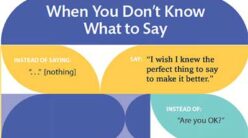Do you ever get up from the table after completing a meal and still feel like you’re craving something? This feeling can lead to unintentional weight gain and issues with self-control. Cravings can be disheartening to deal with because nobody wants to feel like an area of their life is difficult to control. Self-sabotage and negative thoughts can ensue and, with time, it can take a toll on an individual’s well-being. Learning more about the nature of certain foods can help you identify the resources and tools to manage cravings successfully. You have what it takes to reprogram your mindset for dietary balance.
Identify and limit stimulating, low-nutrient foods.
These foods are usually what you see in most food commercials and advertisements. The food industry has created a lot of buzz and glitter around low-nutrient-dense foods, and that’s because there’s a lot of money to be made from cheap ingredients that are selling for top dollar. These foods are rich in refined carbohydrates, processed oils, and low in nutritional value, otherwise defined as empty calories. Think about a burger commercial. Most of what you see is a golden bun, with a stack of meat in between, crispy golden french fries, and a huge cup of soda. This meal is loaded with refined carbohydrates, inflammatory fats, and dense protein with lots of salt. It stimulates endorphins and spikes your sugar, increases cravings, and leaves you hungry for more. These foods can taste and look good in the moment, but they leave you sluggish and poorly nourished, resulting in the desire for more stimulating intake. With time, you will be able to recognize these foods and make better choices.
Make 90 percent of your meal nourishing foods.
The body doesn’t demand food when it is properly nourished. Rich fiber-containing carbohydrates, high-quality protein, and healthy fats are what you need for optimal performance and the generation of satiety. Examples of wholesome, nutrient-dense foods are organic whole-wheat bread (it contains complex carbohydrates due to the fiber kernels, and allows for slower release of sugar, which gives you energy for longer), avocado (which contains monounsaturated fat, vitamins, and minerals), blueberries (they are low in carbs and high in healing antioxidants), and almonds (which have an excellent range of fibers and good fats).
If a craving still arises, don’t panic. Apply the ¼ Rule.
Research has shown that short-term, selective food deprivation may increase food cravings. This creates a negative psychological loop that can encourage impulsive eating. Even though I would say 90 percent of what I personally eat is fiber-rich and nutrient-dense, every now and then I’ll get a craving. Part of living a healthy lifestyle involves allowing some balance, so I’ve coined “The ¼ Rule” to help manage this. For example, if I happen to have some chocolate peanut butter cups (I get a brand that is organic with two in a pack), I will divide one of the cups into 4 sections, and start by eating one section, which comes to a small bite. This might sound a little extreme, but in most cases that will be enough to satisfy my craving, while other times, I may come back for another piece. But, at the end of the day, I would have had only half of one chocolate cup. You can apply this to ice cream, a piece of cake, pie, or salty treats. Do what works for you.
Deprivation is unhealthy and can contribute to anxiety and fear around food, which further exacerbates the issue. Understanding the nature of food can help you enjoy it more. Food is there to serve you, not to control you.
Fay Kazzi, PhD, MS, RD, is a cookbook author, health professional, food enthusiast, educator, and mom of two. She is a registered dietitian and earned her PhD in rehabilitation science, specializing in gut rehabilitation.






